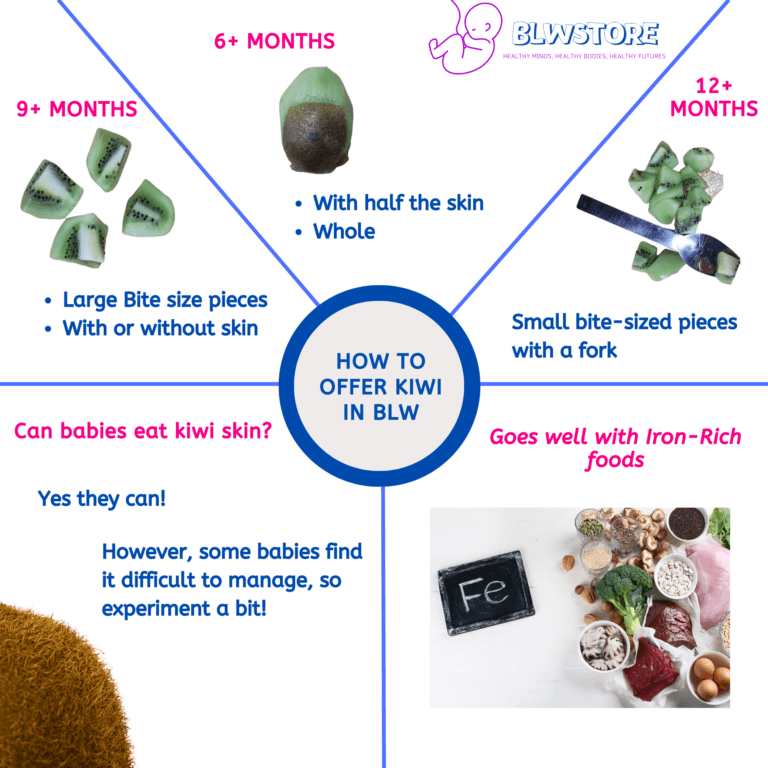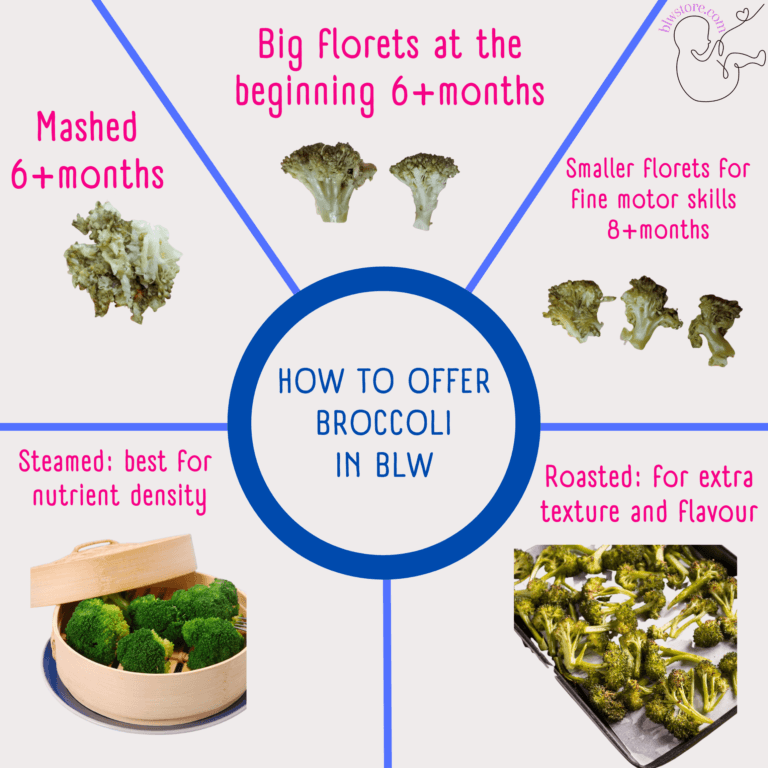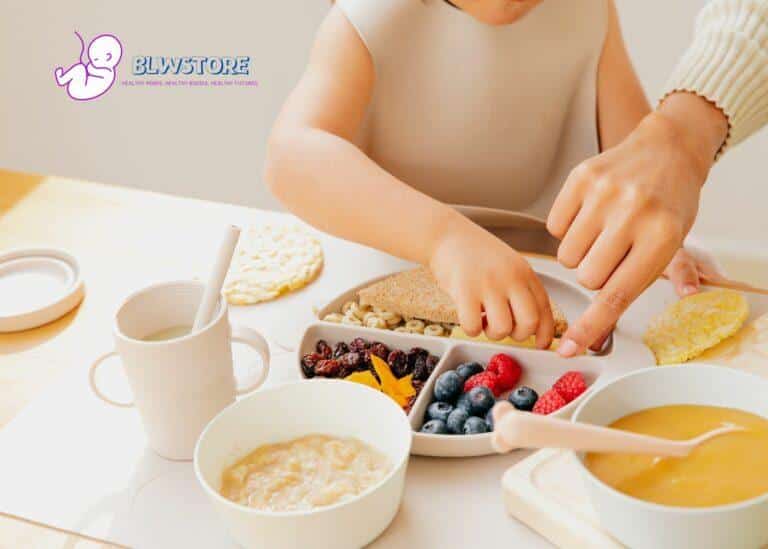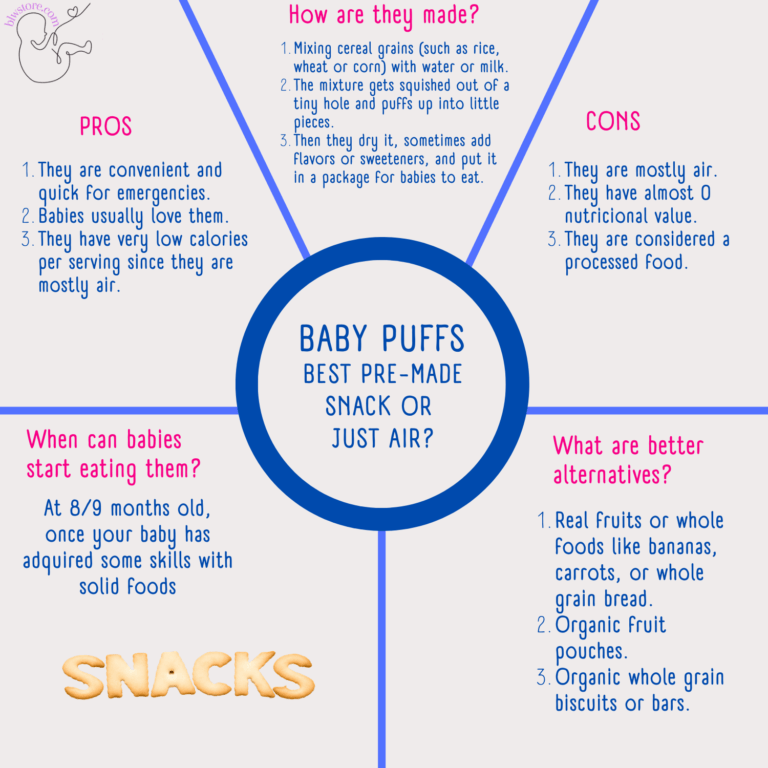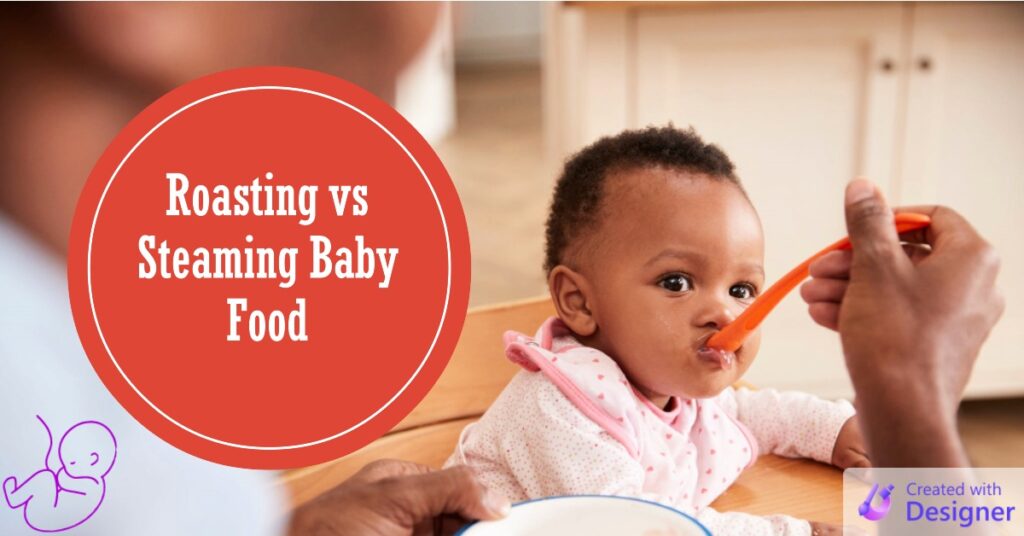
Choosing the best method for preparing baby food is crucial to ensure proper nutrition for your little one’s growth and development.
In this article, we’ll focus on the popular methods of roasting vs steaming baby food, comparing their benefits and drawbacks.
Introducing solid foods at around six months of age is essential, as breast milk or formula alone may not provide enough nutrients.
The cooking method you choose can impact the nutritional value, taste, and texture of the food, directly affecting your baby’s mealtime experience.
Let’s explore the world of roasting and steaming baby food to help you decide on your baby’s needs.
Key Takeaways
| Method | Nutritional Benefits | Taste & Texture | ⏲️ Convenience & Safety |
|---|---|---|---|
| Roasting | Some nutrient loss | Enhanced flavors and crispy texture | Longer cooking time, heats up kitchen |
| Steaming | Better nutrient preservation | Subtler taste, soft and moist texture | Faster cooking time, cooler kitchen but be careful with steam |
Check the best Baby Food Steamers to make your meal prep faster and easier!
What is roasting baby food?
Roasting baby food is a versatile cooking method that enhances natural flavors and creates a delicious crispy or caramelized texture.
Use a little bit of healthy oil and monitor cooking times for best results.
This method uses high oven temperatures (usually between 350°F and 425°F) to cook various fruits, veggies, and meats, making it super versatile.
The best part?
Roasting brings out the natural flavors, giving your baby’s food a sweeter taste and an enticing crispy or caramelized texture.
When you roast baby food, remember to cut everything into even pieces for consistent cooking.
A little bit of healthy oil (like olive or avocado oil) helps with browning and keeps food from sticking. Keep an eye on the oven, as cooking times can vary.
Don’t worry – with a little practice, you’ll master roasting baby food in no time!
What is steaming baby food?
Steaming baby food is a gentle, natural cooking method that keeps all the nutrients intact.
It’s perfect for delicate items like fruits, veggies, and fish, and it’s super easy to do.
Now, let’s talk about steaming, another great option for your baby’s food.
This gentle, moist-heat cooking method uses steam from boiling water or a specialized steamer to cook the food, making it tender and moist.
It’s perfect for delicate items like fruits, veggies, and fish.
It also keeps all the nutrients and it is the most natural way to cook.
Steaming baby food is super easy. Just cut the ingredients into even pieces, place them in a steamer basket or heat-safe dish above boiling water (but not touching it), and cover the pot, or use a baby food steamer.
Cooking times depend on the ingredients, so it might take only a few minutes for softer fruits and veggies, while denser foods like sweet potatoes or meat may need up to 20 minutes or more.
Roasting vs steaming: Nutrition, Taste and Texture and Convenience
Steaming and roasting have their unique advantages.
Steaming preserves more vitamins and minerals, while roasting brings out natural sweetness and adds a crispy texture.
Steaming is quicker and more convenient, but be careful when handling steam to avoid burns.
Nutrition: Steaming is often considered the more nutritious option, preserving vitamins and minerals better than roasting. But don’t worry, roasted foods still pack plenty of nutrients, and some even become more bioavailable, like beta-carotene in carrots!
Taste & Texture: Roasting brings out the natural sweetness in foods and adds a crispy texture that babies might find interesting. On the other hand, steaming offers a subtler, natural taste and a soft, moist texture that’s perfect for babies just starting solids.
Convenience & Safety: Steaming is usually quicker and doesn’t heat up the kitchen as much as roasting, making it more convenient for busy parents. But be careful when handling steam, as it can cause burns. Always use a heat-resistant glove or towel when removing the steamer lid, and keep your little one at a safe distance.
Tips for successful roasting and steaming baby food
Always use fresh, high-quality ingredients. The quality of the ingredients plays a significant role in the taste, texture, and nutritional value of the final product.
Cut ingredients into uniform pieces to ensure even cooking. This is particularly important for roasting, as unevenly sized pieces can result in some parts being overcooked or undercooked.
Monitor the cooking process closely, as cooking times can vary depending on the specific food and desired level of doneness. Adjust cooking times and temperatures as needed to achieve the best results.
Allow cooked foods to cool slightly before serving to your baby. This helps prevent burns and makes the food easier for your baby to handle.
When introducing new foods, start with small amounts and gradually increase as your baby becomes more accustomed to the taste and texture.
Additional baby food preparation methods
Boiling: A simple and convenient method for cooking fruits, vegetables, and meats. However, boiling can cause significant nutrient loss, as water-soluble vitamins and minerals may leach into the cooking water.
Microwaving: A quick and convenient option for reheating or cooking small amounts of baby food. However, microwaving can cause uneven cooking and may not be suitable for all types of foods.
Sautéing: A quick-cooking method that uses a small amount of oil or fat to cook foods in a hot pan. This method can add flavor and texture to foods but may not be ideal for very young babies who are just starting on solids.
Raw: Some fruits and soft vegetables, such as avocado or ripe banana, can be served raw and mashed or pureed for easy consumption by your baby.
Conclusion
Both methods have their benefits and drawbacks.
Roasting can enhance the flavor and texture of foods, while steaming is known for preserving nutrients and providing a gentle cooking process.
The best method for your baby will depend on their individual preferences and needs and your personal priorities as a parent.
Don’t be afraid to experiment with different cooking methods and ingredients to find the right combination for your baby.
The most important thing is to provide your little one with various nutritious and delicious foods to help them grow and thrive.
We’re Maria and Alberto, a married couple and educators who are nutrition enthusiasts. Even before we had kids, we were already crazy about nutrition.
We’d read scientific articles, watch videos from nutritionists, and spend hours listening to nutrition podcasts.
Today, we continue doing this, but in a different way, as we’ve learned to sift through the noise and trends. Nutrition, like any other field of knowledge, the more you read and learn, the more you develop a comprehensive understanding of reality, and that’s what has happened to us.
Before having our first child, we focused on learning everything we could about child nutrition, using the same techniques we had already employed, backed by our extensive knowledge in nutrition.
Our mission is to help other parents with their children’s nutrition, to help them become the best versions of themselves.
If we are what we eat and drink, which is absolutely true, let’s do it right!


